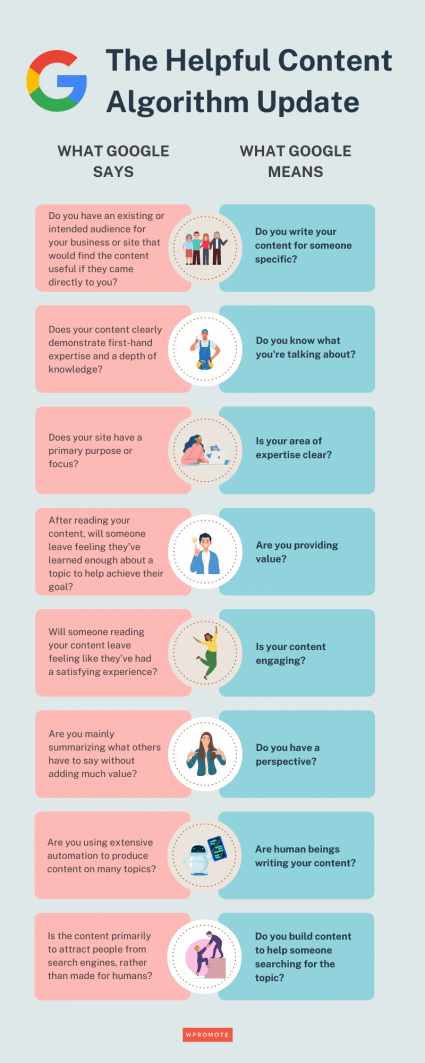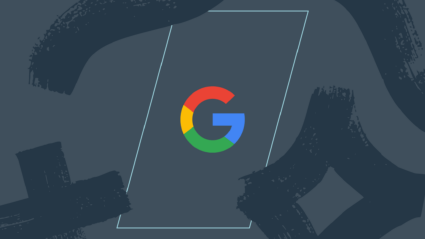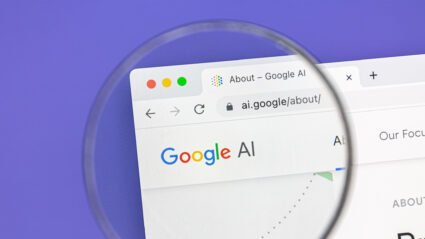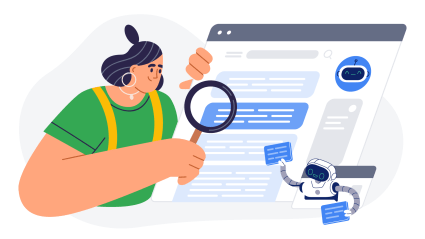On August 18th, Google announced that what’s likely to be the biggest algorithm update in a decade would start rolling out the week of August 22nd. That’s notable in and of itself; the search giant rarely provides advanced notice about algorithm updates, so we expect this to have a major impact on the SERPs.
According to Google, the so-called helpful content update is “part of a broader effort to ensure people see more original, helpful content written by people for people in search results.”
Before we dig into what we know (and what we don’t know), we want to remind you of the first rule of algorithm updates: if you have good fundamentals, there’s no need to panic or rush to change your entire site before we have more information.
So let’s dig into the announcement, how it might impact your site, and what action you should take right now.
What do we know about the helpful content algorithm update?
According to Google, the helpful content update “aims to better reward content where visitors feel they’ve had a satisfying experience, while content that doesn’t meet a visitor’s expectations won’t perform as well.”
Essentially, they want to surface higher quality, informative content more often, and disincentivize sites that are publishing content built to game the algorithm. That should come as no surprise to content marketers and SEOs; it’s been Google’s stated aim for years.
That’s great news: if you’ve been paying attention to Google’s E-A-T guidelines and the evolution of the SERP, this shouldn’t be wildly different from what you’re already doing.
A major source of anxiety, even for marketers doing everything right, is another familiar issue: Google didn’t say what signals the algorithm will be taking into account to judge a particular site. They did provide a checklist of questions that content creators, SEOs, copywriters, and marketers at large should ask about their content to ensure they’re building “human-first” content, not search-engine-first content.

The update is only affecting English language Google search results for the time being, but it will probably roll out some version of “helpful content” evaluation into other result types and languages at a later date.
Although Google explicitly said that the update isn’t targeting any specific content categories or industries, they flagged four types of content that are likely to get hit hard because they tend to be written for search engines:
- Online educational materials
- Arts and entertainment
- Shopping
- Tech-related
What’s the potential impact of a site-wide algorithm update like this?
The biggest curveball is that this algorithm will be considering your entire site, not individual pages, which is a bit of a break from the recent trend for content-focused updates.
That means that some brands producing great content might still be at risk if they have a glut of older, lower-quality content live on the site. It also means that if the algorithm evaluates your site and finds that it’s not meeting these helpful content thresholds, your high-quality content will also suffer.
Although the algorithm will update continuously, it could take months to work your way back into Google’s good graces because they want a site to prove that it has meaningfully changed its ways.
“Sites identified by this update may find the signal applied to them over a period of months. Our classifier for this update runs continuously, allowing it to monitor newly-launched sites and existing ones. As it determines that the unhelpful content has not returned in the long-term, the classification will no longer apply.”
Google’s Search Liason, Danny Sullivan, confirmed to Search Engine Land that this “validation period is automated and while Google updates the scores for its classifiers on your site on an ongoing basis, making a change today, likely won’t be reflected in Google’s rankings for several months.”
Expect SERP volatility to be high as the update rolls out, so keep an eye on your analytics but don’t immediately freak out if you see some changes to your rankings and organic visibility. If you’ve been consistently applying best practices to your content, including auditing and removing older content, you shouldn’t be in major trouble.
What does Google mean by “helpful content”?
Most organic marketers remember the bad old days of SEO, when keyword stuffing was the norm and a lot of content online wasn’t worth the code it was built on. As searchers, we’re all aware that there’s still a fair amount of that going on, albeit in a more sophisticated, less obvious fashion. And most content marketers have experienced the pressure to manipulate content to rank in somewhat sketchy ways.
Google is attempting to solve for this issue and get better content to the top of the SERP by finding more ways to separate the wheat from the chaff and taking a long-term view of a site’s content output.
“People-first content creators focus first on creating satisfying content, while also utilizing SEO best practices to bring searchers additional value.”
Essentially, Google wants you to make great content and use optimization as a way to augment helpful content that matches a user’s search intent and provides value, not just try to game the algorithm to rank a page without the content to back it up.
This idea of “helpful content” also has a lot of E-A-T DNA at its core (no pun intended), which has been front-of-mind for smart organic marketers for a long time. E-A-T, which stands for expertise, authority, and trustworthiness, are the criteria Google’s Quality Raters use to evaluate content, creators, and websites.
https://twitter.com/dannysullivan/status/1182673025692340225?s=20&t=GUcU1ZHWQ4MV1K_u9tj2aA
What should you do to get ready for the helpful content algorithm update?
One last time, in case you missed it: if you have been applying content and SEO best practices, don’t assume the sky is falling. But unless you’ve been the only person working on your website from launch, you should conduct a quick audit of your site content to make sure there’s not a secret stash of 10,000 pages of crappy content from 10 years ago hiding somewhere (every SEO knows that this happens way more often than you think).
“Removing unhelpful content could help the rankings of your other content.”
Your goal should be to identify pages with low-quality or thin content, keyword-stuffed content, or content that has little value to your audience. Then get to pruning!
Use this as an opportunity to foster a better relationship and better processes between your SEO and content teams, as well as anyone else that creates content for your site. SEOs and content marketers and writers are often locked into a semi-antagonistic battle: SEOs want content creators to pay attention to insights from search data and implement optimizations, content marketers and writers want to maintain quality, style, and other creative elements.
Both are right, but they need to work in tandem, seamlessly. Optimizations aren’t going to work without quality content backing them up, and content needs to be engaging and, yes, helpful, not just optimized for search. Make sure you have these basics right, then you can get granular about what’s working and what’s not.
Then stay tuned: we’ll be analyzing our client data once the update starts rolling out and monitoring new information or recommendations from Google in the coming weeks.








Responses